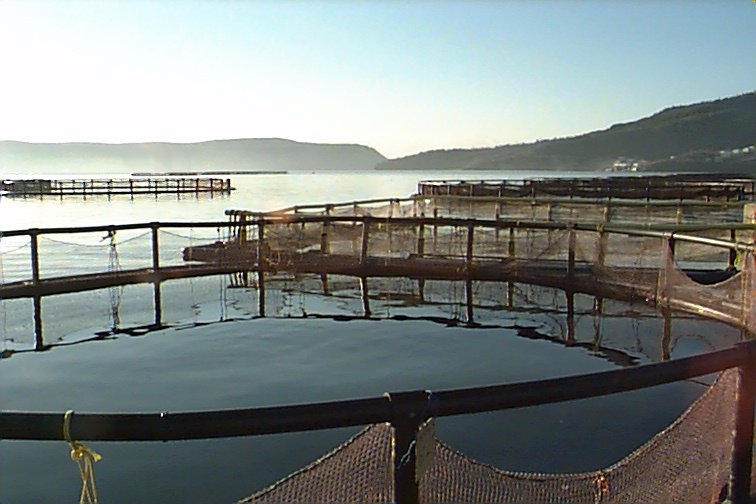|
Home  Canada's Oceans Action Plan Canada's Oceans Action Plan
Canada's Oceans Action Plan
For Present and Future Generations
Integrated Oceans Management for Sustainable
Development
 Over the past decade and a half, our oceans have been a very dynamic growth
sector for Canada’s economy, and currently generate more than $22 billion
directly through ocean-related industries. Over the past decade and a half, our oceans have been a very dynamic growth
sector for Canada’s economy, and currently generate more than $22 billion
directly through ocean-related industries.
Although there have been significant structural shifts in the commercial fishing
sector, this industry continues to make an annual contribution to Canada’s
oceans economy totalling $2 billion in harvest value and $4.4 billion in export
value.
Employment in aquaculture has grown more than 460% and the value of fish farm
production has increased by more than 500%.
Offshore oil and gas production has increased in annual investment value over
the past decade from $250 million to $5 billion. Employment now represents
4.0% of the overall oceans industry compared to past levels of 0.3%.
 Recreation and tourism have grown more than 33% in the past decade despite
a drop in the number of recreational anglers. There has been major growth in
both coastal tourism (156%) and cruise ship tourism (176% in the number of
passengers). Although tourism still remains a relatively small contributor
to the oceans economy, it is increasing in its influence. Recreation and tourism have grown more than 33% in the past decade despite
a drop in the number of recreational anglers. There has been major growth in
both coastal tourism (156%) and cruise ship tourism (176% in the number of
passengers). Although tourism still remains a relatively small contributor
to the oceans economy, it is increasing in its influence.
Given the right oceans management conditions, the oceans economy has the potential
to grow enormously, with benefits for rural and coastal Canadians:
- market analysis indicates the
aquaculture industry could grow from a current annual value of $600 million
into a $2 billion industry;
- fish harvesting and fish processing are still
the backbone and the heart and soul of many if not most coastal economies,
particularly in rural areas. While this sector is expected to remain relatively
stable, if oceanographic and other conditions improve, it has a good potential
to grow. There is a growing global consensus that a more ecosystem-based
approach to fishing will enhance opportunity over time. In addition, the
development of technologies for value-added products offers potential economic
growth at existing harvest levels;
- increased global demand for known and potential
offshore oil and gas reserves points toward significant potential for growth;
and,
- the oceans technology sector has many small and medium-sized enterprises
that have the potential to become important players on the global stage.
There are, however, serious limiting factors that handicap our oceans economy:
- few venues presently exist for multi-sectoral
interests to interact effectively with each other and to sort out conflicting
use issues;
- goals and objectives for decision-making are
not clear nor integrated across sectors and they are not always grounded
in sustainable practices, based on sound science that considers both current
and cumulative impacts;
- regulatory complexity and uncertainty as well
as a continuing lack of awareness about economically based oceans activities
 frequently result in unreliable and hesitant investor confidence; frequently result in unreliable and hesitant investor confidence;
- emerging industries seeking to find a niche
such as offshore aquaculture, mineral and metal exploration and other non-traditional
energy sources like wind and wave power generation are increasingly experiencing
conflicts with other more traditional oceans uses over space and resource
allocation; and,
- “non-consumptive uses” of the oceans environment (cable-laying
for telecommunications or electricity; oil or gas pipelines; etc.) often
experience conflict due to lack of planning or concerns about lost access
to ocean areas.
Solutions to these problems can be found in new management models founded
on the three principles of Canada’s Oceans Act: sustainable development,
the precautionary approach and integrated management.
Countries around the globe that have pursued modern oceans management, including
Canada, have recognized the value of integrated oceans management. The precautionary
approach compels more care be taken where knowledge and scientific research
has yet to provide sufficient certainty to decision-making.
The principle of Integrated Management was first agreed to at the 1992 United
Nations Conference on Environment and Development, which recognized the long
term value of sustainable development. Canada, by signing the “Agenda
21” commitments, joined the global community in supporting action. Canada
has taken some significant steps to move toward the protection of the ecosystem
and increased resource management capability.
Through the Oceans Act and supporting policy direction, we have agreed to:
- work together among governments;
- bring sectors and citizens together using
more open and transparent management and advisory bodies;
- pursue ecosystem-based approaches;
- base decisions on strong scientific advice;
and,
- apply conservation and protection measures in the marine environment through
actions such as Marine
Protected Areas and “smart” regulations,
and guidelines and standards to ensure marine environmental quality.
The Oceans Action Plan will build upon these approaches.
|
